Did you know wolf eye colors are more than just a captivating feature?
It can reveal fascinating insights into their personality and habitat. From the genetics behind their eye color to the environmental factors that influence them, and the controversy surrounding rare eye colors, there’s much to learn about wolf eye colors.
So let’s get started!
Wolf Eye Colors List
1. Yellow Eyes

Yellow is the most common eye color for wolves. It is often associated with intelligence, confidence, and a fierce spirit. Wolves with yellow eyes are typically dominant and assertive. Yellow eyes are also a common feature of the Eastern Timber Wolf.
2. Amber Eyes

Amber eyes are less common in wolves but are still prevalent. Wolves with amber eyes are often seen as more approachable and friendly. They are also associated with strength and a high level of awareness. Wolves with amber eyes are commonly found in the Arctic, where they help the wolves see in low light.
3. Green
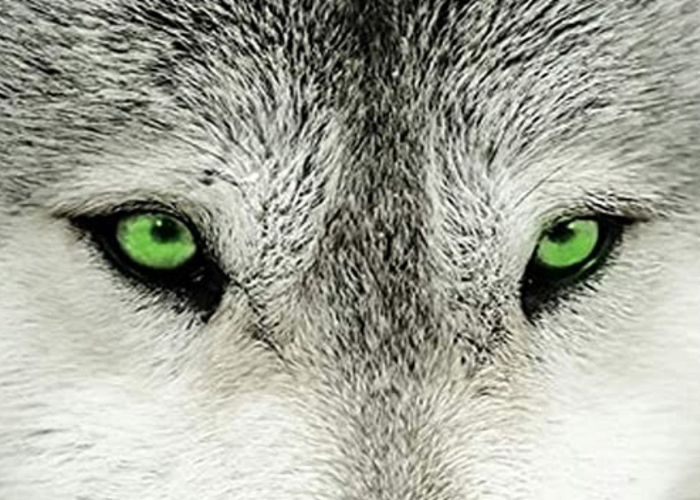
3. Green is the rarest eye color for wolves. Wolves with green eyes are often seen as unique and mysterious. Green eyes are associated with strong intuition and deep emotional intelligence. The green eye color is typically found in wolves in Europe.
4. Blue Eyes
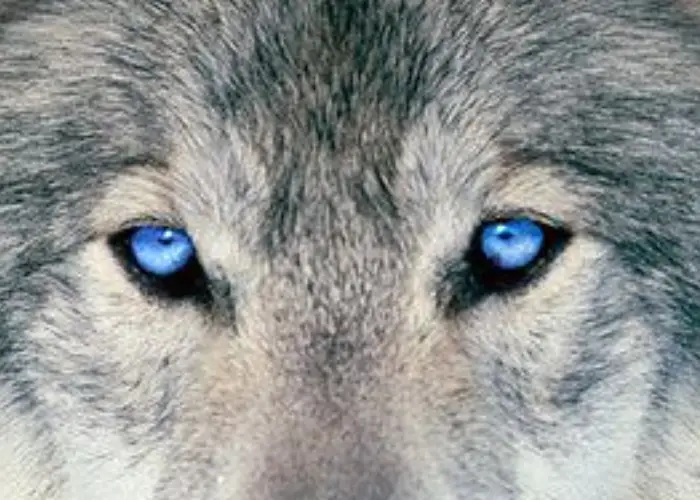
Blue eyes are another rare eye color for wolves. Wolves with blue eyes are usually more docile and introverted. Blue eyes are most commonly found in the North American Arctic, where they help the wolves see in the bright, snowy landscape.
5. Brown Eyes
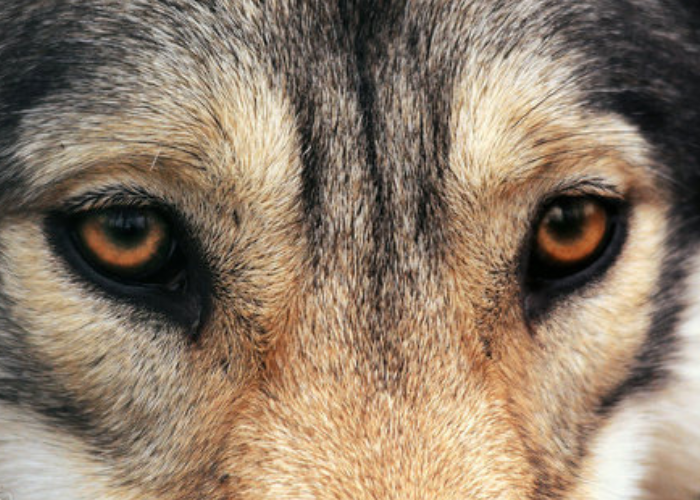
Brown eyes are one of the most common eye colors found in wolves. They are associated with warmth, earthiness, and reliability. Wolves with brown eyes are generally considered to be more social and outgoing. Brown eyes are found in wolf populations worldwide, including North America, Europe, and Asia.
Why Do Wolves Have Different Eye Colors?
The different eye colors in wolves are due to a variety of factors. Genetics plays a significant role in determining a wolf’s eye and coat colors, but environmental factors also play a part.
RELATED ARTICLE: Wolf Colors: 7 Fascinating Shades of Nature’s Canines
Genetics:

The color of a wolf’s eyes is determined by genes, specifically those responsible for the production and distribution of melanin. Melanin is the pigment that gives skin, fur, and eyes color. The amount and distribution of melanin in the eyes determine the eye color.
Wolves inherit their eye color genes from their parents, and it can be a dominant or recessive trait. For example, yellow eyes are a dominant trait, while blue eyes are recessive. If both parents have yellow eyes, their offspring will likely have yellow eyes. However, if one parent has blue eyes and the other has brown eyes, their offspring could have blue or brown eyes.
Genetics Behind Wolf Eye Colors

Understanding the specific genes responsible for wolf eye colors can help us gain deeper insights into the variations and patterns seen in their eye colors.
One of the primary genes involved in eye color is the OCA2 gene. This gene controls the production of P protein, which is essential for melanin production.
Variations in the OCA2 gene can affect the amount of P protein produced, influencing the amount of melanin in the eyes. This results in different eye colors in wolves, such as yellow, amber, green, blue, or brown.
Another gene that plays a role in eye color is the HERC2 gene. This gene interacts with the OCA2 gene and can influence the expression of P protein. Different combinations of OCA2 and HERC2 gene variations can result in diverse eye color patterns in wolves.
Further research is needed to identify other genes involved in determining wolf eye colors and understand the complex interactions between these genes and environmental factors.
Environmental Factors:
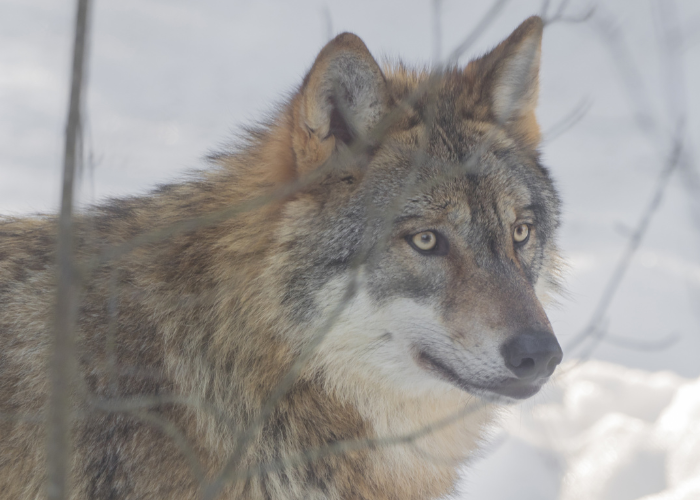
While genetics significantly determine eye color, environmental factors can also influence it. For example, in the Arctic, the reflection of light off snow and ice can cause wolves’ eyes to develop a blue color.
This is because the snow and ice reflect UV light, which can damage the eyes. To protect their eyes, wolves produce more melanin, which can cause their eyes to appear blue.
The amount of light that wolves are exposed to can also affect their eye color.
If a wolf is exposed to more sunlight, their eyes may become lighter in color. Conversely, if a wolf is exposed to less light, their eyes may become darker.
Wolf eye color is determined by genetics and influenced by environmental factors such as light and reflection of snow and ice.
While certain breeds may be more commonly associated with specific eye colors, it’s important to remember that individual wolves can have different eye colors due to these factors.
Identifying Wolf Breeds by Eye Color
Eastern Timber Wolf

Eastern Timber Wolves are typically found in forests and woodlands in the eastern part of North America. They have a stocky build with a thick coat of fur, which can range from gray to brown in color.
Arctic Wolf

This breed is known for its white fur and can have either amber or blue eyes. Arctic Wolves are usually found in the Arctic tundra and have adaptations that help them survive in extremely cold temperatures. They have shorter ears and snouts than other wolf breeds, which helps them conserve body heat.
European Wolf
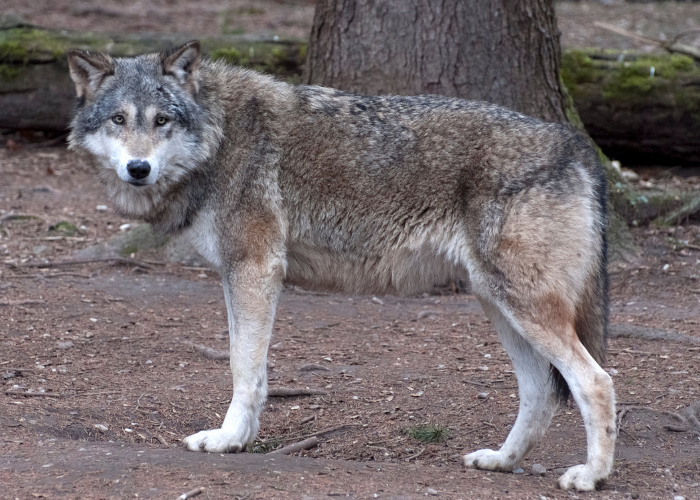
European Wolves are found in various habitats, including forests, mountains, and grasslands. They have a leaner build than other wolf breeds, with longer legs and a narrower snout.
Gray Wolf
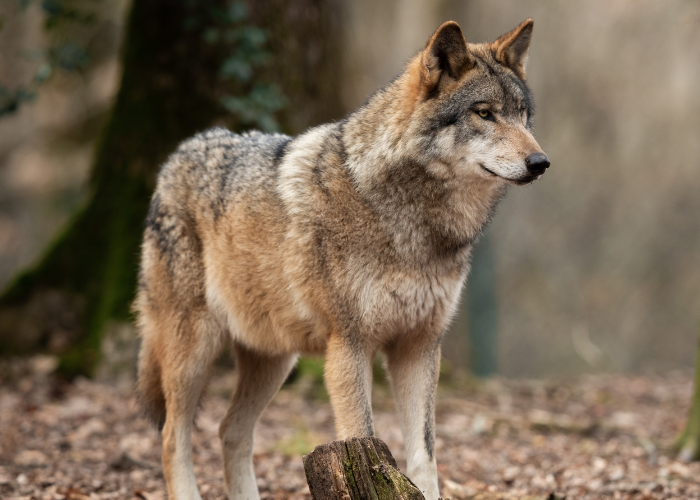
This breed is the largest, most common type of wolf and can have a variety of eye colors, including yellow, amber, and even brown. Gray Wolves are found in various habitats, from forests and mountains to deserts and grasslands. They have a thick, shaggy coat of fur that can vary in color from gray to brown to black.
In addition to eye color and physical characteristics, habitat and behavior can also help distinguish each wolf breed.
For example, Arctic Wolves are adapted to live in the extreme cold, while Gray Wolves can adapt to a range of habitats. Wolves in different habitats may also have different behaviors and hunting strategies.
By observing a wolf’s eye color and other physical characteristics, as well as their habitat and behavior, you can begin to distinguish different wolf breeds.
However, it’s important to remember that individual variations and shades within these main colors can occur due to genetic factors or other influences.
Wolf Eye Color Controversy
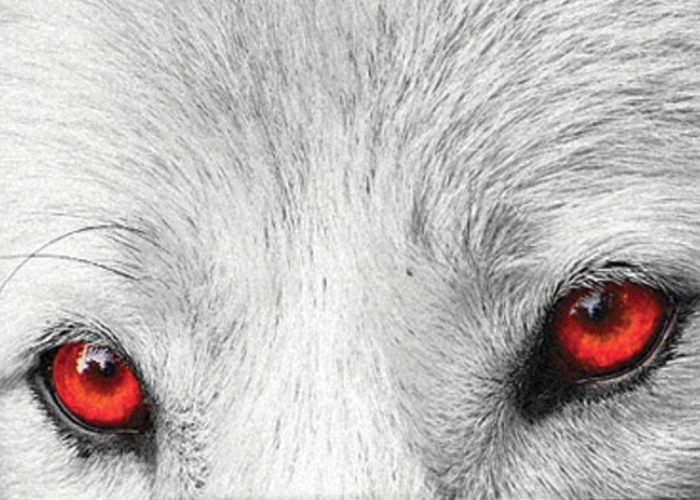
While the existence of yellow, amber, green, blue, and brown wolf eye colors is widely accepted, there are some controversies and differing opinions surrounding other, rarer colors like orange, red, or purple.
Some claim to have witnessed wolves with these unique eye colors, but these sightings are often met with skepticism. Some of these rare eye colors include:
Orange Eyes
Orange eyes in wolves are extremely rare and might result from genetic factors and environmental influences.
- One possibility is that the orange hue could be a variation of amber, with a specific shade depending on the amount and distribution of melanin.
- Another explanation could be the reflection of sunlight during sunrise or sunset, causing the eyes to appear orange.
Red Eyes
Red eyes in wolves are also exceptionally rare and controversial.
- One theory for red eyes is the presence of a high concentration of blood vessels in the eye or the reflection of blood vessels in certain lighting conditions. This could cause the eyes to appear red, even if they are not genetically red.
- Another explanation could be light reflection during sunrise or sunset, similar to the case with orange eyes.
Purple Eyes
Purple eyes in wolves are extremely rare, with very few reported sightings. The existence of purple eyes is highly debated, as there is no current scientific explanation for this eye color in wolves.
- Some argue that purple eyes could result from a unique genetic mutation affecting the distribution of melanin.
- Others suggest that the appearance of purple eyes could be due to lighting conditions, the reflection of the surrounding environment, or even photographic manipulation.
The existence of orange, red, or purple eyes in wolves remains a topic of debate, with no clear consensus among experts.
More research is needed to determine whether these rare eye colors are genuine genetic variations or simply misinterpretations of more common colors under specific conditions.
Medical Conditions Associated with Particular Eye Colors in Wolves
While eye color in wolves is primarily determined by genetics and influenced by environmental factors, some medical conditions or health implications may be associated with specific eye colors.
Notably, these conditions are relatively rare and may not be directly caused by the eye color itself, but rather by underlying genetic factors or mutations.
Pink Eyes
Albinism, a genetic condition characterized by a lack of pigmentation in the eyes, skin, and fur, can result in pink eyes in wolves.
While true albinism in wolves is extremely rare and not well-documented, it can lead to various health problems, including vision issues, sensitivity to sunlight, and an increased risk of skin cancer.
Albino wolves may struggle to survive in the wild, as their lack of pigmentation can make them more visible to predators and hinder their ability to camouflage.
2-Colored Eyes
Wolves can have two different colored eyes, a condition known as heterochromia.
While this condition is not typically associated with health problems, it can sometimes indicate underlying genetic or developmental issues.
For example, heterochromia in wolves may be linked to Waardenburg syndrome, a rare genetic disorder that can cause deafness, changes in pigmentation, and other developmental abnormalities.
However, most cases of heterochromia in wolves are benign, and the affected animals do not experience any negative health effects.
Conclusion
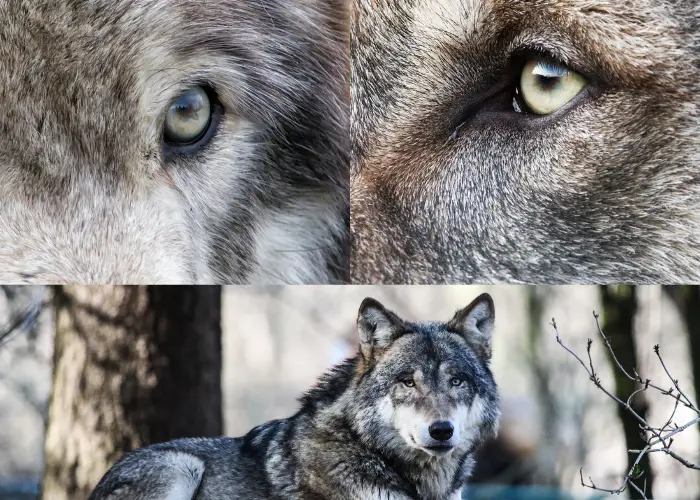
Wolf eye colors vary, ranging from yellow to amber to green or blue. The color of a wolf’s eyes can signify its personality traits, such as dominance or friendliness.
While genetics plays a role in determining eye color, environmental factors also contribute. Whether you encounter a wolf with yellow, amber, green, or blue eyes, remember to admire its beauty from a safe distance.
Frequently Asked Questions:
What are wolf-dog eye colors?
Wolf dog eye colors can vary, depending on the breed of dog and wolf involved. Common eye colors include yellow, amber, blue, brown, and green, but individual variations can occur due to genetics and environmental factors.
Why do wolves have 2 different colored eyes?
Wolves can have two different colored eyes, a condition called heterochromia, due to genetic variations or developmental factors. This occurs when the distribution of melanin, the pigment responsible for eye color, differs in each eye.
Can wolves have pink eyes?
It is extremely rare for wolves to have pink eyes. Pink eyes could result from albinism, a genetic condition that results in a lack of pigmentation in the eyes, skin, and fur. However, true albinism in wolves is exceedingly rare and not well-documented.
What color are wolf eyes at night?
At night, wolf eyes may appear to glow due to a reflective layer in their eyes called the tapetum lucidum. This layer helps them see better in low-light conditions. The color of a wolf’s eyes at night depends on their daytime eye color, but they will appear brighter and more reflective in low light.
Wolf eyes in humans
“Wolf Eyes” in humans typically refers to the appearance of having intense, captivating, or mysterious eyes, often with a slightly predatory or wild look. This term is not connected to any specific eye color or shape but is more about the overall impression the eyes create. It is purely a descriptive term and has no biological basis in humans.
REFERENCES:
- Wolf. (2023, April 24). In Wikipedia. https://en.wikipedia.org/wiki/Wolf
- Negro, J. J., Carmen Blázquez, M., & Galván, I. (2017, December 4). Intraspecific eye color variability in birds and mammals: A recent evolutionary event exclusive to humans and domestic animals – frontiers in zoology. BioMed Central. Retrieved April 28, 2023, from https://frontiersinzoology.biomedcentral.com/articles/10.1186/s12983-017-0243-8


